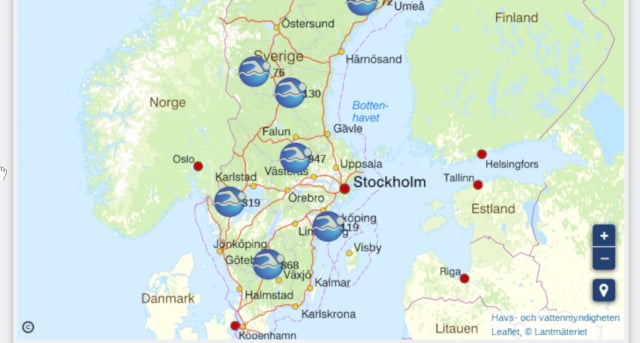A total of 356 Swedish beaches were rated as being of ‘excellent’ quality for swimmers. This figure was up from 353 in 2018 and 333 the year before.
That’s according to a new assessment of the country’s so-called ‘EU beaches’, which means they are part of the union’s clean bathing water scheme and get their water quality assessed on a regular basis. In total, 94 percent were considered to be of excellent, good, or satisfactory quality, while in 24 cases, the tests were insufficient to be able to get a ranking.
Only one of the EU swimming spots in the whole country was classed as being of poor quality, down from two last year. That was Björkängs havsbad on the eastern coast, between Varberg and Falkenberg.
It’s possible to find out the classification, algae levels, and even the water temperature of the swimming spots near you by looking at an interactive map provided by HAV.

Click on the map to see the full list of beaches. Screenshot: HAV/Lantmäteriet
“We take tests continuously to be able to have these labels,” said Mats Svensson, department head at the Swedish Agency for Marine and Water Management (HAV) which put together the ranking together with the Swedish Public Health Agency.
The tests look at the presence of two bacteria, E coli and intestinal enterococci, which may indicate pollution, for example from sewage or livestock waste.
READ ALSO:



 Please whitelist us to continue reading.
Please whitelist us to continue reading.
Member comments